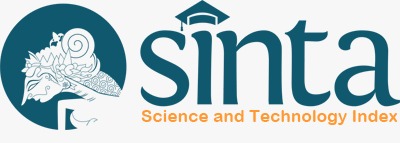An Adaption of the Endangered Togutil Tribe's Local Wisdom into an Animation Character Design
DOI:
https://doi.org/10.31937/ultimart.v11i2.975Abstract
As an archipelago state, Indonesia is full of diversity, home to numerous different ethnic groups, culture, and languages. However, this diversity has been neglected by both the government and citizens. In fact, in North Moluccas, East Halmahera forest, there is a primitive tribe which is endangered, named Togutil. Therefore, we try to package the life of Togutil tribe and their challenges into a character for animated films in a unique way. Animation has become one of the education tools aside from literacy media. Animation was chosen as a medium to reach all ages and convey the message in interesting ways. Each character has its own background aside from the main storyline. This creates a strong impression of the character to the viewer. Iconic character not only can attract the viewer, but also popularize a culture. The strength of character can be used as a medium to introduce a culture, such as the endangered Togutil tribe. Through creative imagination, the local wisdom of Togutil tribe can be packed into a unique character design. For example, the age of Togutil which is relatively young compared to other primitive tribe can be packed into the form of a child. The unique design not only attracted the viewer, but also introduce the existence of Togutil tribe itself.
Downloads
Published
How to Cite
Issue
Section
License
Authors retain copyright and grant the journal right of first publication with the work simultaneously licensed under a Creative Commons Attribution-ShareAlike International License (CC-BY-SA 4.0) that allows others to share the work with an acknowledgement of the work's authorship and initial publication in this journal.
Authors are able to enter into separate, additional contractual arrangements for the non-exclusive distribution of the journal's published version of the work (e.g., post it to an institutional repository or publish it in a book), with an acknowledgement of its initial publication in this journal.
Copyright without Restrictions
The journal permits the author(s) to hold the copyright without restrictions and will hold distributing rights without limitations.
The submitted papers are assumed to contain no proprietary material unprotected by patent or patent application; responsibility for technical content and for protection of proprietary material rests solely with the author(s) and their organizations and is not the responsibility of the Ultimart: Jurnal Komunikasi Visual or its Editorial Staff. The main (first/corresponding) author is responsible for ensuring that the article has been seen and approved by all the other authors. It is the responsibility of the author to obtain all necessary copyright release permissions for the use of any copyrighted materials in the manuscript prior to the submission.














